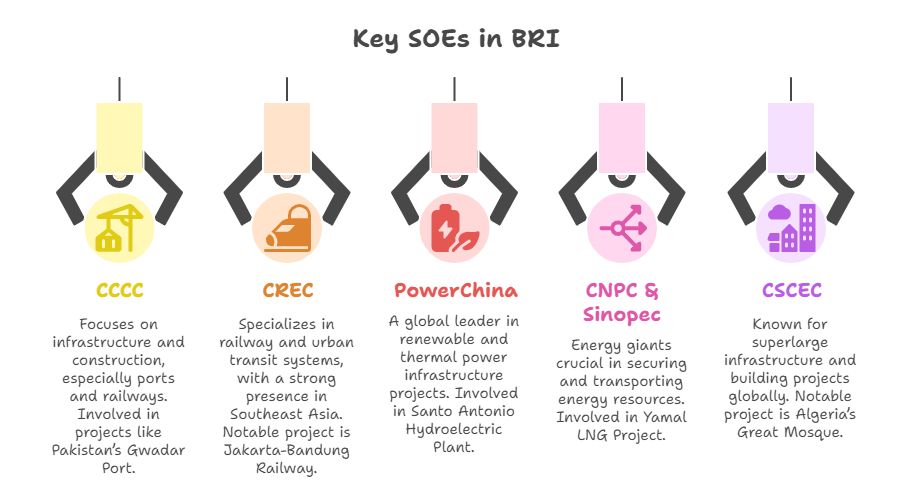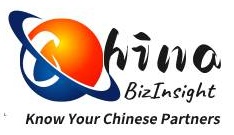The Belt and Road Initiative (BRI), launched by China in 2013, is one of the most ambitious infrastructure and economic development projects in modern history. Spanning over 140 countries, it aims to enhance regional connectivity and embrace a brighter economic future. At the heart of this initiative are China’s Central State-Owned Enterprises (SOEs)—massive, government-backed corporations that drive the planning, financing, and construction of BRI projects worldwide.
In this article, we’ll explore the critical role these SOEs play in the Belt and Road Initiative, highlight some of the most influential companies and iconic projects, and discuss both the opportunities and risks for international businesses looking to engage with these giants.
What Are China’s Central SOEs?
Central State-Owned Enterprises are large corporate entities where the Chinese government holds controlling shares. They operate in strategic sectors such as energy, transportation, construction, telecommunications, and heavy industry. There are currently 100 central SOEs directly supervised by the State-owned Assets Supervision and Administration Commission (SASAC).
These enterprises are not only economic actors but also instruments of national policy. They possess immense resources, technical expertise, and government support, making them ideal vehicles for executing China’s overseas infrastructure goals under the BRI.
Key SOEs Driving the Belt and Road Initiative
Here are some of the most active central SOEs in BRI projects:

1. China Communications Construction Company (CCCC)
Sector: Infrastructure & Construction
Notable Projects:
- Pakistan’s Gwadar Port: A cornerstone of the China-Pakistan Economic Corridor (CPEC).
- Mombasa-Nairobi Standard Gauge Railway: A modern railway in Kenya that has significantly improved transport efficiency.
CCCC is one of the world’s leading port and railway builders and has been involved in numerous transportation projects across Asia, Africa, and Europe.
2. China Railway Group (CREC)
Sector: Railway Construction
Notable Projects:
- Jakarta-Bandung High-Speed Railway: Indonesia’s first high-speed rail line.
- Lagos-Ibadan Railway: A major rail modernization project in Nigeria.
CREC specializes in railway and urban transit systems and has a strong presence in Southeast Asia, Africa, and the Middle East.
3. Power Construction Corporation of China (PowerChina)
Sector: Energy & Utilities
Notable Projects:
- Santo Antonio Hydroelectric Plant: Brazil (one of the largest hydropower projects in the country).
- Solar and wind farms across Kazakhstan, Egypt, and Argentina.
PowerChina is a global leader in renewable and thermal power infrastructure.
4. China National Petroleum Corporation (CNPC) & Sinopec
Sector: Oil & Gas
Notable Projects:
- Yamal LNG Project: Russia (a massive liquefied natural gas initiative).
- Oil refineries and pipelines in Myanmar, Kazakhstan, and Saudi Arabia.
These energy giants are crucial in securing and transporting energy resources along the Belt and Road routes.
5. China State Construction Engineering Corporation (CSCEC)
Sector: Building & Construction
Notable Projects:
- Algeria’s Great Mosque: One of the largest mosques in the world.
- Thailand’s High-Speed Rail: Phase 1 of the China-Thailand railway project.
CSCEC is known for its superlarge infrastructure and building projects.
The Role of SOEs in the BRI
SOEs are the backbone of the BRI. They are involved in:
- Financing: Many SOEs have their own financing arms or work closely with policy banks like China Exim Bank and China Development Bank.
- Engineering & Construction: From railways and ports to power plants and industrial parks.
- Operation & Maintenance: Some SOEs also manage projects long-term, especially in ports and logistics.
Their involvement ensures that BRI projects are not only built but often integrated into broader Chinese supply chain and logistics networks.
Opportunities for International Businesses
International companies, investors, and governments can engage with Chinese SOEs in several ways:
- Joint Ventures: Partnering with SOEs in third-party markets.
- Supply Chain Cooperation: Becoming a supplier or service provider for BRI projects.
- Financing & Insurance: Collaboration with international banks and insurers to co-fund projects.
- Due Diligence & Risk Management: Providing legal, financial, or regulatory advisory services.
However, working with SOEs requires a clear understanding of their structure, governance, and strategic priorities.
Risks and Challenges
While opportunities abound, there are also significant risks:
- Political and Regulatory Risks: BRI projects are sometimes caught in geopolitical tensions or local regulatory changes.
- Financial Risks: Debt sustainability concerns have been raised in host countries.
- Reputation Risks: Environmental, social, and governance (ESG) issues are increasingly under scrutiny.
- Operational Risks: Differences in management style, culture, and business practices.
This is where due diligence becomes essential. Understanding the background, financial health, and legal standing of an SOE partner can make or break a deal.
How to Verify Chinese SOEs
If you’re considering partnering with or supplying to a Chinese SOE, it’s crucial to verify their legitimacy, financial status, and project history. This is where professional business intelligence services come in.
At ChinaBizInsight, we help international clients access official company reports, verify business credentials, and conduct deep due diligence on Chinese enterprises—including SOEs. Whether you need a basic business credit report or a comprehensive risk analysis, we provide authoritative, English-language reports you can trust.
For example, our Professional Enterprise Credit Report offers detailed insights into a company’s financials, legal records, executive background, and more.
Conclusion
Chinese SOEs are powerful engines behind the Belt and Road Initiative, driving infrastructure development across the globe. For international businesses, they represent both a tremendous opportunity and a complex challenge. Success requires not only strategic alignment but also thorough research and risk assessment.
To help you navigate this landscape, we’ve compiled a List of China’s 100 Central State-Owned Enterprises—a valuable resource for anyone looking to understand key players in the Chinese market. Download the full list here.
If you’re interested in learning more about how to verify and collaborate with Chinese SOEs, feel free to explore our services or reach out for a consultation.
